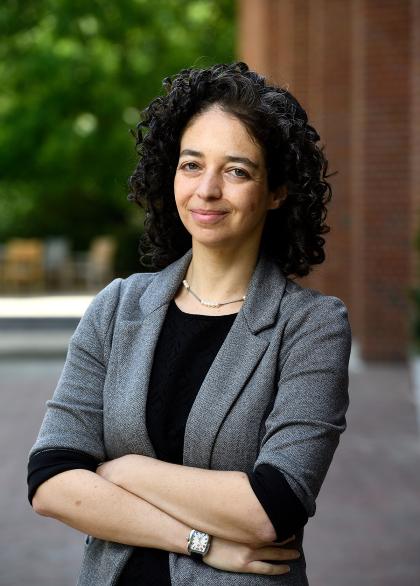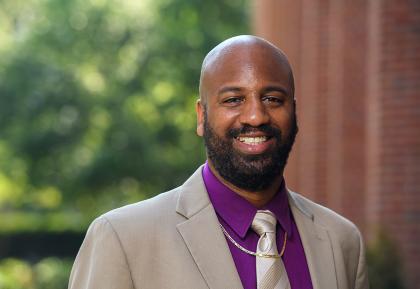A year after the launch the university's diversity action plan last winter, Johns Hopkins is transitioning from a period of implementation to one of accountability.
Goals have been drafted and fine-tuned. Support structures have been built. Now it's time to begin looking closely at outcomes and progress and, in time, reporting out regularly to the university community.
Substantial headway has already been made on several priorities included among the 24 goals in The Second JHU Roadmap on Diversity, Equity, and Inclusion. This includes:
- Publication of the university's first diversity statement
- The arrival of the first cohort of Vivien Thomas Scholars
- The launch of the Fannie Gaston-Johansson Faculty of Excellence Program
- A significant expansion of the Office of Diversity and Inclusion
Simultaneously, divisional goals were developed in the university's nine academic divisions and 20 operational divisions. Those goals were recently published on JHU's diversity website, providing visibility into the diversity, equity, and inclusion work happening across the university. Each goal includes details on measurable outcomes and a timeline that spans the full five years of the Roadmap's lifespan.
"You know the issues that you face around diversity and inclusion," Katrina Caldwell, JHU's chief diversity officer and vice provost for diversity and inclusion, said during the annual Diversity Leadership Conference in October. "You know the work that needs to be done. And so empowering the academic and operational divisions to galvanize around those issues and move those goals forward is the best way for us to have institutional success."
The approach also reinforces the important idea that this work is shared, Caldwell added, not the responsibility of a handful of diversity and inclusion practitioners.
In some cases, divisions have robust and longstanding diversity programs, as is the case with the Bloomberg School of Public Health. Its Inclusion, Diversity, Anti-Racism, and Equity (IDARE) action plan is similar, both structurally and aspirationally, to the university's diversity plan, and its introduction in the spring of 2021 predates the launch of the university's second Roadmap by more than a year.
The IDARE ideals are woven into the school's overarching strategic plan, which explicitly prioritizes the cultivation of a diverse, inclusive, and nurturing environment for students, faculty, staff, and the community.

Image caption: Joel Bolling
Image credit: Will Kirk / Johns Hopkins University
"We knew that IDARE needed to be incorporated into everything we do as a school—our research, our practice, our education," said Joel Bolling, assistant dean for inclusion, diversity, anti-racism, and equity at the Bloomberg School. "It's not only the responsibility of individuals from underrepresented backgrounds or historically marginalized communities. It's everyone's responsibility. … You can't do this work by yourself. You have to have partners across the organization."
The Bloomberg school's stated goals include continuing to increase the diversity of its faculty, with a particular emphasis on individuals from underrepresented backgrounds, and ensuring greater equity in the hiring of senior staff positions.
"I'm optimistic about where we are and where we're going," Bolling said. "Under Katrina's leadership, we have a very good thought leaders, and I'm confident that our university is investing in this work, making sure it is resourced in ways it hasn't been in the past."
Elsewhere, such as in the new Office of Interdisciplinary Initiatives within the provost's office, diversity and inclusion planning is in its infancy. Lainie Rutkow, inaugural vice provost for interdisciplinary initiatives, and her team have worked closely with the Office of Diversity and Inclusion to develop and refine their goals as well as the underlying measurables and timelines.

Image caption: Lainie Rutkow
Image credit: Will Kirk / Johns Hopkins University
The office has settled on two goals for the university's new home in Washington, D.C., at 555 Pennsylvania Ave., which will open this fall:
- To use best practices to hire a team for 555 Penn that reflects and promotes equity, inclusivity, and diversity in experiences and perspectives
- To establish diversity, equity, and inclusivity as core values at the new facility and for related programming
"I believe that every aspect of our work benefits from the time we've spent with ODI to develop our goals," Rutkow said. "While the thought and intention behind the goals is critical, my team is most excited to implement them in the months and years ahead."
Among those from the Office of Diversity and Inclusion working closely with Rutkow is Emil Cunningham, who joined Johns Hopkins in February 2022 as JHU's first assistant vice provost for diversity and inclusion. He has served as a resource for divisional leaders from across the university as they finalize their goals and develop accountability metrics, and he will help ensure that they live up to the commitments they have made.

Image caption: Emil Cunningham
Image credit: Will Kirk / Johns Hopkins University
The process will be transparent, Cunningham said, with biannual progress reports shared with the entire university community. Additionally, the inaugural DEI Summit is being planned for the fall, an opportunity to reflect on how far the university has come and to take stock of how much work remains to be done.
"Overall I feel positive," Cunningham says. "I think when you look day in and day out, you don't really see the change because it's hard to witness that daily growth. But from the 10,000-foot level, when you look at where we are now compared to where we were at this time last year, we've made some substantial progress.
"These aren't just words on a screen or on a piece of paper," he adds. "This truly is a living, breathing initiative that will help to influence our daily experiences for the better. It's one thing to have professed goals. It's another to live those day in and day out."
Posted in University News
Tagged diversity









